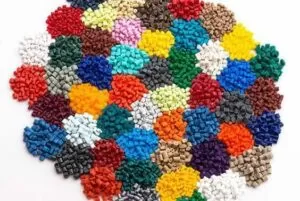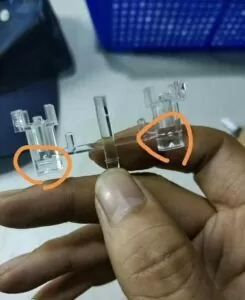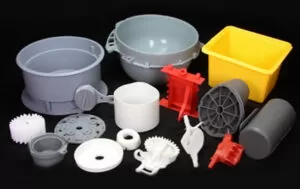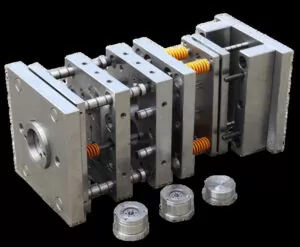Introduction
In the realm of industrial fabrication, injection molding stands as a pivotal methodology, extensively harnessed for the genesis of a myriad assortment of plastic commodities. This technique entails the liquefaction of plastic granules until they transmute into a viscous, molten form, subsequently thrust into a mold cavity under formidable pressure. Upon cooling and solidification, the plastic adopts the mold’s configuration, culminating in the crafted artifact. Esteemed for its expeditiousness and capacity to spawn voluminous amounts of complex and detailed components with meticulous accuracy, this method is a preferred choice in manufacturing.

Comprehension of dimensional diminution in injection-molded pieces is imperative for fabricators. ‘Shrinkage’, as it is known, denotes the diminution in magnitude of a plastic component as it transitions from a fluidic, molten state to a rigid, solid state. The extent of shrinkage can markedly sway the dimensional fidelity and overall caliber of the end product. Variables such as the category of plastic material, mold architecture, procedural conditions, and the rate of cooling substantially influence the magnitude of shrinkage. Neglecting to duly account for shrinkage can result in components failing to align with stipulated specifications, thereby culminating in the squandering of resources, time, and escalating expenditures. Consequently, an in-depth cognizance of the factors influencing shrinkage behavior and methodologies to regulate it is crucial in the crafting of high-caliber, uniform injection-molded components.
II. The Science of Shrinkage in Injection Molding
Exposition on Injection Molding Shrinkage:Its Essence and Foundational Principles
The phenomenon known as the shrinkage rate in the realm of injection molding denotes the diminution in size of a plastic component, transitioning from its incandescent molten state within the mold cavity to its ultimate, solidified configuration. This contraction transpires as the plastic undergoes cooling and solidification subsequent to its introduction into the mold. The shrinkage rate, subject to considerable fluctuation contingent on a myriad of factors, stands as an indispensable metric in the injection molding procedure. It is customarily quantified as a percentage, reflecting the disparity in dimensions twixt the molten plastic ensconced in the mold and the final cooled artifact.
Grasping this shrinkage is imperative for a multitude of reasons. Primarily, plastic substances, whether crystalline or amorphous in nature, inherently experience a decrement in volume as they transition from a heightened temperature molten state to a lower temperature solid state. This volumetric transformation is not consistent across all plastic varieties and is swayed by the particular thermal and molecular attributes inherent to each material.
The Imperative of Shrinkage Regulation in Fabricating Prime-Quality Plastic Components
The governance of shrinkage is paramount in the fabrication of prime-quality plastic components. Inconsistencies in shrink rate or unforeseen shrinkage can culminate in parts that deviate from tolerance, signifying a failure to comply with the stringent dimensional specifications established for them. Such anomalies can materialize in diverse forms, ranging from inadequate fit in an assembly to impaired functionality of the component.

For fabricators, the prowess to prognosticate and administer shrinkage efficaciously equates to the assurance of dimensional precision in their products. This precision is pivotal not solely for the component’s operationality but also for its visual allure, particularly in consumer goods where aesthetic uniformity is of the essence. Moreover, adept shrinkage regulation aids in curtailing wastage, both material and temporal. By comprehending the various elements influencing shrinkage, manufacturers can fine-tune their design, material selection, and processing parameters. Such prescience leads to diminished production errors, a lesser necessity for rework, and ultimately, a production process that is both more economical and efficient.
By probing into the specifics of shrinkage causation and its manageable aspects, manufacturers can uphold elevated standards of quality and uniformity in their injection molded products.
III. Nuanced Variables in Plastic Contraction Dynamics
Exploring the Influence of Polymer Composition on Shrinkage
The essence of polymer composition is integral to its behavior during the injection molding odyssey, especially in shrinkage phenomena. Two predominant polymer varieties in this realm are the amorphous materials and crystalline substances, each manifesting unique attributes.
Dichotomy between Amorphous and Crystalline Substances:
Amorphous polymers, exemplified by polystyrene and ABS (Acrylonitrile Butadiene Styrene), lack a precise melting threshold. They transition gradually, engendering a more homogenous contraction. Conversely, crystalline substances like polyethylene and polypropylene, marked by a distinct melting apex, undergo more capricious cooling and crystallization, often leading to escalated shrinkage disparities when juxtaposed with amorphous polymers.
Influence of Molecular Mass and Polymer Variants on Contraction:
The molecular mass of a polymer significantly sways its shrinkage propensity. Elevated molecular masses usually translate to diminished shrinkage, as elongated polymer chains interlace, offering resistance to diminution. Specific polymer breeds, such as high-density polyethylene (HDPE), owing to their molecular weight and their dense crystalline matrix, might experience amplified shrinkage rates.

Shrinkage Idiosyncrasies Across Diverse Polymers Apprehending the distinct shrinkage traits of each polymer is pivotal for precision in mold design and the calibration of process parameters.
Contrasting Shrinkage Tendencies Among Diverse Polymers:
Take polycarbonate, an amorphous polymer, typically exhibiting lesser shrinkage and augmented dimensional stability relative to semi-crystalline polymers like polyethylene. Nevertheless, the cooling velocity and crystallinity magnitude profoundly impact the ultimate shrinkage quantum.
Alterations in Shrinkage Due to Additives and Fillers:
Incorporating additives and fillers into polymers can markedly revamp shrinkage dynamics. Fillers, such as glass fibers, curtail shrinkage by impeding polymer chain mobility, thus bolstering dimensional consistency. However, the spatial distribution and concentration of these fillers necessitate meticulous orchestration, as they can induce anisotropy, culminating in uneven shrinkage across different axes.
Comprehending these nuanced material variables is vital in anticipating and managing shrinkage in injection-molded components. Through judicious selection of polymer types and cognizance of the repercussions of additives and molecular mass, manufacturers can adeptly navigate shrinkage to forge high-caliber, dimensionally faithful plastic parts.
IV. The Art of Mold Design and its Influence on Material Contraction
The Intricacies of Wall Thickness and Mold Cavity Architecture in Shrinkage Management
In the realm of injection molding, the artistry of mold design emerges as a pivotal element in mitigating material contraction. Central to this craft are two aspects: the thickness of the mold walls and the intricate design of the mold cavity itself.
Influence of Wall Dimensionality on Material Contraction: The dimensionality of a mold’s walls exerts a profound influence on material contraction. Thicker walls, by virtue of their capacity to retain thermal energy for extended periods, engender a more leisurely cooling rhythm. This decelerated thermal dissipation affords the material ample time to contract, often culminating in pronounced shrinkage in these zones. In stark contrast, slimmer walls expedite cooling, curtailing contraction but heightening the peril of uneven thermal dissipation and the consequent deformity.
Mold Cavity Design and Its Consequences on the End Product: The holistic conception of the mold cavity, encompassing elements such as its form and the mass distribution within, significantly sways material contraction. Intricate shapes interwoven with varied wall thicknesses can precipitate disparate cooling velocities within the same object, leading to irregular contraction. Meticulous crafting of the mold cavity, with a keen eye on the trajectory and thermal dynamics of the molten material, is indispensable to mitigate these challenges and ensure consistent contraction throughout the object.
Gate Dimensions and Mold Framework
The gateway marks the juncture where molten material makes its ingress into the mold cavity, and its dimensions and architecture are critical in contraction management.
The Role of Gate Dimensions in Contraction Management: The magnitude of the gateway significantly influences the dynamics and pressure of the molten material as it permeates the mold. An expansive gateway fosters a brisk flow rate, facilitating rapid mold filling and a more harmonized cooling process. This can aid in diminishing uneven contraction across the object. Nonetheless, an excessively large gateway can also spawn issues like flash, where surplus material breaches the mold cavity’s confines.
Significance of the Mold’s Structural Design in Contraction Outcomes: The overarching architecture of the mold structure, encapsulating the positioning and dimensions of gateways, conduits, and cooling channels, plays a vital role in determining contraction behavior. Astute design ensures efficacious and uniform cooling, thereby reducing the incidence of contraction-induced flaws. Moreover, the thermal properties of the mold material itself also impact the cooling process and, consequently, the degree of material contraction.
V. Process Parameters Influencing Shrinkage
Temperature and Pressure Dynamics
In the realm of injection molding, temperature and pressure are two critical process parameters that greatly influence the shrinkage of the final product.
Effects of Molding Temperature and Injection Pressure on Shrinkage: The molding temperature encompasses both the temperature of the molten plastic and the mold itself. Higher molding temperatures generally cause the plastic to shrink more as it cools and solidifies due to greater thermal contraction. Consistently maintaining the optimal molding temperature is crucial for reducing shrinkage variations. Similarly, the injection pressure, which dictates how the molten plastic is injected into the mold, plays a significant role. Higher injection pressures can decrease shrinkage by densely packing the molten plastic into the mold, leaving less room for the material to contract. However, excessively high pressures might lead to other issues like warping or internal stresses.

The Relationship Between Molten Material Temperature and Shrinkage: The temperature of the molten material before injection is a determinant factor in shrinkage. Higher temperatures mean the material will undergo more significant contraction as it cools, leading to greater shrinkage. The key is to find an optimal temperature that ensures good flow and fill of the mold while minimizing shrinkage.
Cooling Process and Time
The cooling phase is equally vital in the plastic injection molding process, as it directly affects the part’s final dimensions and properties.
Importance of Cooling Rate and Time in Determining Final Dimensions: The rate at which the molded part cools and solidifies in the mold cavity can significantly impact its shrinkage. A faster cooling rate typically results in less overall shrinkage, as the material has less time to contract. This must be balanced, however, as too rapid cooling can induce residual stresses and potential warping. A controlled and uniform cooling process is key to ensuring dimensional accuracy and reducing shrinkage discrepancies.
Challenges of Uneven Cooling and Their Solutions: Uneven cooling, often due to variations in the mold temperature or irregularities in the part’s wall thickness, can result in uneven shrinkage across the part. This can lead to warping and dimensional inconsistencies. Solutions include the strategic placement of cooling channels in the mold design, ensuring consistent wall thickness throughout the part, and utilizing advanced temperature control systems to achieve uniform cooling throughout the mold cavity.
In summary, the careful management of temperature and pressure during the injection molding process, along with a well-considered cooling strategy, is essential for controlling shrinkage. These parameters must be optimized to balance the flow and cooling of the molten plastic, ultimately leading to high-quality, dimensionally accurate injection molded parts.

Conclusion
In conclusion, effective shrinkage control in injection molding is a multifaceted challenge that requires a comprehensive understanding of materials, the injection molding shrinkage, design, and process parameters. By focusing on these areas and striving for a balanced approach, manufacturers can significantly enhance the quality and consistency of their injection molded parts.






